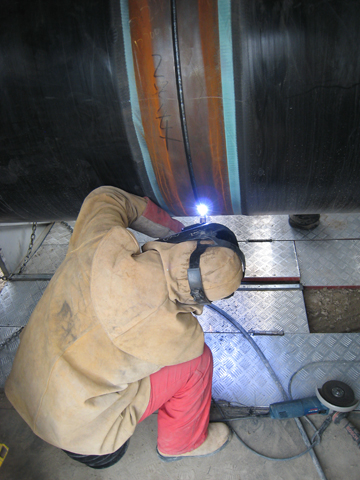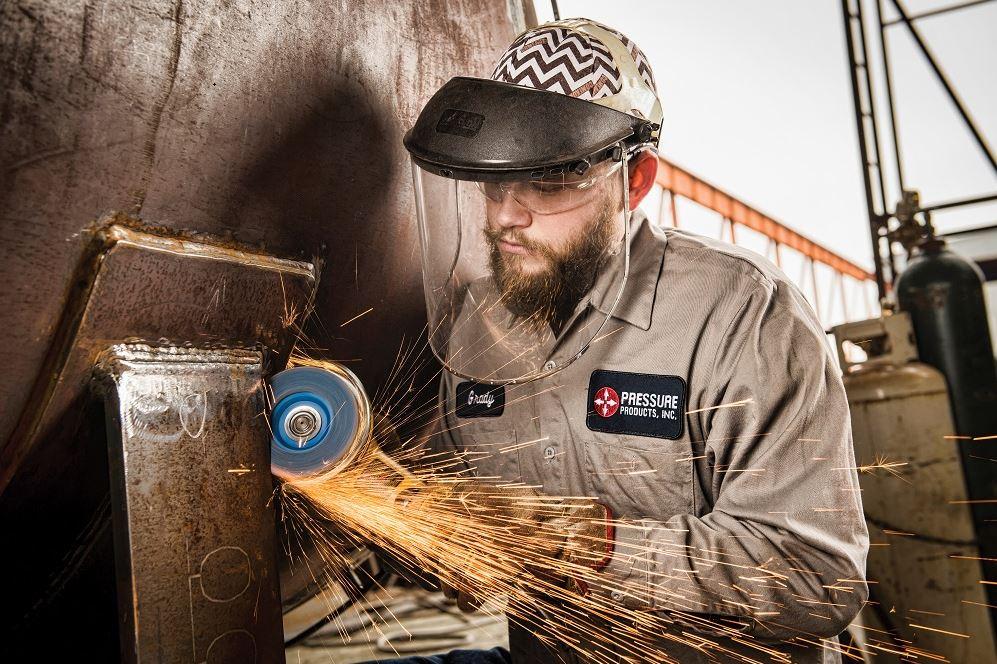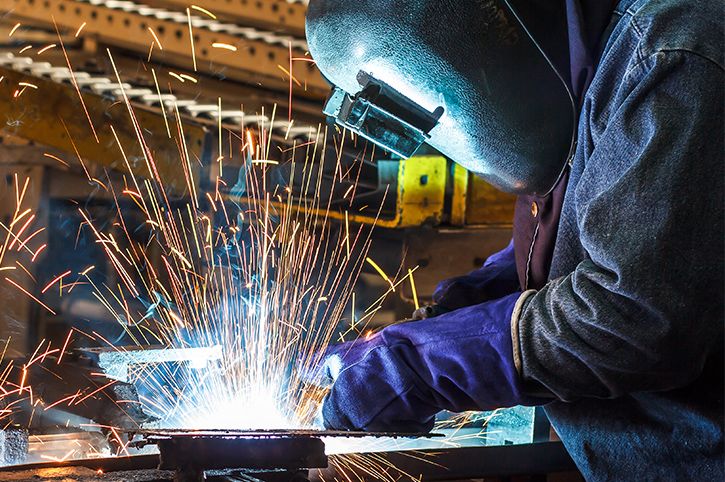Usual Welding Repair Work Issues and Exactly How to Address Them Efficiently
Welding repair services typically encounter a series of concerns that can endanger the stability of the last item. Common troubles include poor penetration, porosity, and imbalance, amongst others. Each problem offers distinct difficulties that require particular techniques for resolution. Recognizing these problems is necessary for welders aiming to improve their skills and outcomes. This conversation will explore these common welding fixing problems and reliable techniques to address them.
Inadequate Penetration
Insufficient penetration takes place when the weld steel fails to totally fuse with the base product, resulting in weak joints and potential structural failings. This issue frequently stems from insufficient warmth input, incorrect electrode angle, or improper welding rate. Welders might encounter poor penetration as a result of a mistake of the needed specifications for a particular product thickness or type. In addition, contamination on the base material's surface area can hinder effective bonding, worsening the issue. To attend to insufficient infiltration, welders need to guarantee ideal setups on their equipment and preserve a clean job surface area. Normal inspection of welds is recommended to determine any kind of shortages early, permitting for prompt adjustments and the avoidance of jeopardized structural integrity in bonded settings up.
Porosity
Porosity is an usual issue in bonded joints that materializes as small gas bubbles entraped within the weld metal. This defect can jeopardize the stability of the weld, resulting in reduced stamina and possible failing under tension. Montana Mobile Welding and Repair Belgrade. Porosity typically develops from contamination, dampness, or improper welding methods, which enable gases to leave into the liquified weld swimming pool. To resolve porosity, welders must guarantee appropriate surface preparation, maintain a clean functioning environment, and utilize suitable welding specifications. Additionally, choosing the right filler product and protecting gas can mitigate gas entrapment. Regular evaluation and testing of welds can help determine porosity early, assuring prompt restorative activities are taken, thereby preserving the top quality and reliability of the welded framework
Misalignment
Imbalance in welding can occur from various factors, including incorrect arrangement and thermal expansion. Comprehending the origin is necessary for effective resolution. Several correction techniques are available to straighten elements and guarantee structural honesty.
Root causes of Misalignment
Welding misalignment often originates from a range of underlying problems that can endanger structural stability. One main cause is inappropriate fit-up of parts before welding, which can lead to spaces and uneven surface areas. Variations in thermal development throughout the welding procedure can likewise result in distortion, specifically if the products being joined have different coefficients of expansion. Additionally, insufficient securing and fixturing may fall short to hold parts firmly in location, leading to movement throughout welding. Badly kept equipment, including welding makers and devices, may introduce inconsistencies in the weld grain, more contributing to imbalance. Operator mistake, stemming from not enough training or experience, can additionally play a significant duty in creating misaligned welds.

Improvement Techniques Readily Available
Addressing imbalance properly calls for a combination of corrective strategies tailored to the specific problems handy. One typical technique is making use of fixtures or jigs to hold components in the right placement during welding, making certain constant placement. Furthermore, pre-heating the products can assist reduce distortion and enhance fit-up. For considerable misalignment, mechanical realignment methods, such as utilizing hydraulic jacks or clamps, can be utilized to correct the position prior to welding. Post-weld heat treatment might also be necessary to relieve stresses brought on by imbalance. Lastly, careful examination and modification throughout the setup stage can avoid misalignment problems from becoming significant issues, advertising a smoother welding procedure and improving overall structural integrity.
Distortion
Distortion is a typical obstacle in welding that can emerge from different variables, consisting of unequal heating & cooling. Understanding the reasons for distortion is essential for applying reliable prevention techniques. Addressing this problem not just enhances architectural honesty but also boosts the overall top quality of the weld.
Root causes of Distortion
When based on the intense warmth of welding, products typically undertake adjustments that can bring about distortion. This sensation primarily emerges from thermal development and contraction throughout the welding procedure. As the weld location warms up, the product expands; upon cooling, it acquires, which can create inner stress and anxieties. In enhancement, uneven heating across a work surface can intensify these stress and anxieties, leading to bending or bending. The type of product likewise plays a considerable role; steels with varying thermal conductivity and coefficients of growth might react differently, causing unpredictable distortions. Inadequate joint layout and inadequate fixturing can add to misalignment throughout welding, enhancing the possibility of distortion. Recognizing these causes is crucial for efficient welding repair service and prevention strategies.
Avoidance Techniques
Efficient avoidance strategies for distortion during welding emphasis on managing warmth input and making certain proper joint layout. Preserving a regular heat input helps to minimize thermal growth and tightening, which can lead to distortion. Making use of techniques such as preheating the workpiece can additionally reduce the temperature slope, promoting consistent heating. In addition, selecting proper joint designs, such as T-joints or lap joints, can boost stability and reduce tension concentrations. Applying proper fixturing to secure the workpieces in position additionally aids in preserving positioning throughout the welding procedure. Ultimately, staggered welding sequences can distribute warmth much more evenly, stopping local distortion. By using these techniques, welders can substantially lower the chance of distortion and boost the overall quality of their welds.
Fracturing
Breaking is an usual problem experienced in welding repair work, commonly arising from numerous elements such as improper cooling prices, product choice, or poor joint prep work. The incident of fractures can significantly endanger the integrity of the weld, causing potential failings during procedure. To resolve this concern, welders should first analyze the root triggers, making sure that products work and suitably chosen for the certain application. Additionally, controlling the cooling price throughout the welding procedure is necessary; rapid cooling can induce anxiety and result in fracturing. Correct joint style and preparation additionally add to lessening the danger. Carrying out these approaches can enhance weld quality and longevity, ultimately lowering the probability of splitting in completed best inverter welder weldments.

Insufficient Combination
A substantial concern in welding repair services is insufficient blend, which happens when the weld steel does not properly bond with the base product or previous weld passes - Montana Mobile Welding and Repair Fabrication. This problem can cause weaknesses in the joint, possibly compromising the integrity of the welded framework. Variables adding to insufficient blend include insufficient warm input, incorrect welding method, and contamination of the surfaces being signed up with. To resolve this concern effectively, welders ought to guarantee proper pre-weld cleansing and surface area preparation, in addition to adjust their welding criteria to attain ample infiltration and combination. Regular evaluation throughout the welding process can also assist recognize insufficient combination early, enabling for prompt restorative procedures to improve the overall top quality of the weld
Overheating
While welding repair work can improve architectural stability, overheating provides a significant difficulty that can bring about product destruction. Excessive heat throughout welding can modify the mechanical residential properties of metals, causing lowered toughness, increased brittleness, and bending. This phenomenon is especially critical in high-stress applications where architectural dependability is critical. Recognizing getting too hot can include visual evaluations for discoloration or distortion, as well as monitoring temperature during the welding process. To minimize the dangers linked with getting too hot, welders should use proper methods, such as regulating warmth input, changing traveling rate, and making use of appropriate filler products. Furthermore, implementing pre- and post-weld heat treatments can help bring back material residential properties and enhance the total quality of the repair service, making certain long-lasting performance and safety and security.
Frequently Asked Inquiries
What Are the Usual Indicators of a Welding Flaw?

Just How Can I Evaluate My Welds for High quality?
To test welds for top quality, one can use aesthetic assessments, ultrasonic screening, and radiographic techniques. Each method guarantees architectural stability, determines issues, and validates adherence to specified criteria, ultimately improving the dependability of the welded joints.
What Safety and security Preventative Measures Should I Take While Welding?
When welding, one need to focus on safety by wearing suitable individual safety devices, guaranteeing correct air flow, securing combustible products away, preserving a clean work area, and understanding environments to stop mishaps and injuries.
Can I Fix a Weld Without Remodeling the Entire Joint?
Fixing a weld without renovating the entire joint is possible, relying on the damage (Montana Mobile Welding and Repair Belgrade Fabrication). Methods such as grinding, adding filler product, or utilizing a welding procedure can effectively attend to specific problems while protecting the bordering framework
What Tools Are Vital for Reliable Welding Fixes?
Essential tools for reliable welding repairs include a welding maker, cable brush, mill, protective gear, clamps, welding magnesium and filler materials. Each tool plays a crucial function in guaranteeing quality and safety and security throughout the repair service process. Porosity usually occurs from contamination, moisture, or incorrect welding techniques, which allow gases navigate to these guys to run away right into the molten weld pool. Inadequately maintained equipment, including welding machines and tools, may present incongruities in the weld grain, more contributing to imbalance. When subjected to the extreme warm of welding, products frequently undertake adjustments that can lead to distortion. Splitting is a common issue encountered in welding repair work, typically resulting from various factors such as improper cooling rates, material selection, or insufficient joint prep work. A substantial concern in welding fixings is insufficient combination, which takes place when the weld metal does not properly bond with the base material or previous weld passes.